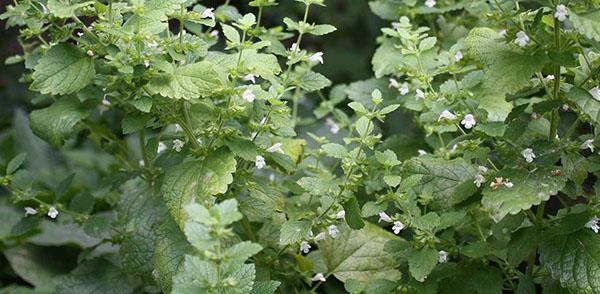Charming melissa: how to recognize her from a thousand
 Everyone's favorite lemon balm is also known among gardeners as lemon mint. The culture received this name due to the light citrus aroma, which comes from the touch of its delicate leaves. However, it should be borne in mind that there are many plants similar to lemon balm. Each of these varieties has a number of distinctive features.
Everyone's favorite lemon balm is also known among gardeners as lemon mint. The culture received this name due to the light citrus aroma, which comes from the touch of its delicate leaves. However, it should be borne in mind that there are many plants similar to lemon balm. Each of these varieties has a number of distinctive features.
Fresh leaves of the aromatic herb contain a huge amount of nutrients and essential oils. However, the spice loses its medicinal properties during drying, as well as during long-term storage. Within 2-3 months, the ethers simply evaporate.
Melissa and her competitors
The first close "relative" of lemon balm is the catnip. The culture has the same lemon aroma, but with a lighter touch. You can distinguish these 2 varieties of mint by several characteristics:
- lemon balm flowers are white, while catnip they are bluish;
- inflorescences of lemon mint are located in the axils of the leaves in the form of rings, and not panicles at the edge of the shoot, as in the cat variety;
- lemon balm leaves have a more round shape with pronounced veins, and in catnip they are ovoid with a serrated edge.
Catnip is ubiquitous. Culture helps with bronchitis, cough, anemia, and it also serves as an excellent antihelminthic agent.
Another "competitor" of lemon balm is the Moldavian snakehead. Unlike all other crops, this Turkish variety belongs to annuals. Grows in Siberia, as well as in the southern regions of Russia. Due to the high concentration of essential oils, it emits a richer lemon scent than lemon balm. At the same time, the leaves retain such an intense smell for 3-4 years. But for this, the raw materials are collected as late as possible. Moldavian snakehead serves as an excellent honey plant. So from 1 hectare bees can collect up to 500 kg of honey.
It is important to read the packaging carefully to distinguish these 3 varieties of mint. Credible growers must indicate the Latin names of the plants. The catnip is Nepeta cataria, the snakehead is Dracocéphalum moldavica, and the lemon balm is Melissa officinalis.
Conditions for growing fragrant lemon balm
Fertile soil is a prerequisite for growing lemon mint. Therefore, gardeners always apply fertilizer to their site and carry out regular planting fertilizing. Then the herbaceous culture will grow in one place for about 3-4 years. However, harsh winters often weaken her immunity. Among other things, a well-lit place is selected for lemon balm. In dry seasons, the garden must be watered.
The culture is propagated in 3 ways:
- seeds;
- cuttings;
- dividing the bush.
As soon as the seed pods turn brown and begin to crack, they are harvested. Before sowing, the planting material is not soaked. On the flower bed, make wide grooves of 5-7 cm. The seeding depth is 2-3 diameters of seeds. When shoots appear, the bed is weeded, removing the weeds. Such methods of caring for lemon balm contribute to obtaining an excellent harvest.